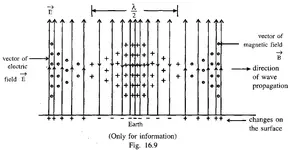Re: discussion on the various possible theories that may be applicable to LrL's
EE THr said:
It could be a man made stimulator, or amplifier, or sensor. Or some combination thereof.
Hi EE THr,
Yes, I suppose it could be just as you say.
As long as we are only taking stabs at it, here is something some experimenters have been trying similar to what you are describing:
There is a group of treasure hunter experimenters who have been building VLF transmitter/receiver sets in a single enclosure (or close to it) to survey the ground where they go treasure hunting. These VLF machines resemble the VLF survey equipment that geologists use, except the transmitter is portable and mounted with the receiver so it is easy to carry in one hand. Some of them have reported they can sometimes locate metals with these VLF machines they build. After looking at what they are doing, it seems like their equipment is a cross between a geologist's VLF gear and a VLF metal detector operating in the 50 KHz to 150 KHz range.
Just from what I saw, and the skill level of the experimenters, I would consider any of them lucky to find anything with what they built. But if they are careful about the details of how they build and use their gear, it is possible they can locate something at long range. After all, geologists routinely map out a lot of things harder to detect and deeper under the ground than some treasure hunters would feel like digging.
Looking into the theory of VLF detection, we know it depends on RF penetrating the ground, and recording how much of the VLF is absorbed and/or reflected back to where we sense the RF strength. What the survey crews are actually detecting is the ground conductivity anomalies, as measured by the varying RF absorption they see happening at different locations. Of course, the geologist uses a lot of data he looks up in tables and takes samples to make some sense of the variations he sees, so he will have a good idea if he is seeing granite formations, or ore bodies.
What is different about the experimenters is they don't know much about geology compared to a geologist. Most of them don't even know so much about electronics. But when I see what they are doing, it looks like there are some real science principles at work, rather than a do-nothing box of un-connected wires and switches.
Basically they are operating in a range of VLF which I expect to penetrate the ground up to 5 feet in an average soil condition we might find in a field. This could be double, or much less than 5 feet, depending on the soil, the frequency and the power level they are broadcasting. But I figure a useful depth to be about 3 feet, maybe to 5 feet before the ground penetration drop any signal to unusable in the ambient noise levels. But these experimenters are not using some remote megawatt transmitter hundreds of miles away, or even setting up their own quarter mile diameter loop on the ground to make a uniform VLF transmission. They have a small loop maybe 4-6 inch diameter they carry around pointing horizontally. This is a transmitter sending RF which we expect exhibit near-field wave propagation for a magnetic dipole. Considering the loop is held horizontally, they are broadcasting a ground wave more than anything else in the distance out in front of them where they search for treasure. So we see their circumstance is much different than a geologist who has a relatively uniform field to map a large plot of land.
But this is ok for these hobbyists. They don't need to turn in any VLF survey map for a client. They only need to find some direction where their TX/RX set shows something is buried. Or more precicely, where they see a difference in something about how the VLF is interacting with the ground in front of them. In order to understand how this could happen (how it could happen for a lucky experimenter who took some care in how he went about it), we need to look closer at the details of their hunting scenario.
They are sending a RF from a magnetic dipole which has lobes at the sides, and the null point along the axis of the loop, or directly in front of where they point the loop. These experimenters say they usually hold these loops pointing ahead, but tilted a few degrees down. This sounds similar to searching the ground with a flashlight. You may point it a few degrees down so the light will be illuminate a large ellipse of ground in front of you. And apparently, they scan slowly back and forth as they walk forward, much as you might do while searching with a flashlight. When considering what happens to this "illuminated" area in front with a VLF coil, we expect it to be a dark area where the null point is for the coil. And the strong broadcast areas are to the sides. In order for this scheme to work, they are looking for a negative signal, similar to how you use a radio direction finder to locate a transmitter by finding the weakest signal direction. Looking back at the transmitter loop, we see it is held maybe 4 feet above the ground, which tells us we don't expect to see what looks like ground waves until we move a few feet away to the front and sides to lose the vertical vector influences. Coincidentally, experimenters report very poor pinpointing ability using these loop detectors, which seems understandable to me). So it appears they are operating as radio direction finders to locate some buried stuff in the distance, more than a few feet away. The question comes: how does it work?
We already have a pretty good theory of how it works from the previous discussion. But there are some missing details. For example, how does a buried piece of metal in the distance register a VLF RX signal? There is no eddy current detection happening at more than a few feet, so they must find a different way. Accprding to experimenters who claim to be successfull at sometimes locating metals, they say it took a long time to balance and null their RX coil so the TX (which is broadcasting during a continuous monitoring with the RX) does not interfere and swamp the RX signal. The RX coil took many forms and configurations, and was moved around until a good positioning and circuit tuning allowed them to pick up some signals at a distance. Too bad no tuning details were given beyond that, and that it needs to be tuned in a field away from all metal and power sources.
From this clue, we can speculate they are detecting a signal that returns from the ground in front of them, or they are detecting a the signal that is being sent from the TX coil. Or it could be a combination of both, ie: detecting a small portion of the TX coil plus whatever reflects back from the ground mixed with it.
From this point, we have a few workable possibilities. If the RX is detecting the TX plus a reflected signal, the two signals are nearly in phase, and will look like additive signals. When something comes along to reflect more back to the RX, then we expect the signal strength to increase. Of course electronic methods can be used to make slight variations easy to detect like are used in metal detectors such as IB, BFO, etc. by making an electronic signal strength conversion. And even the small phase shift might be noticable with the suitable electronic method to detect it.
But there is something else going on besides only the reflected RF. A ground wave is vertically polarized because of the conductivity of the ground. So the electric waves are moving horizontally along the ground. Lets look at what happens to this wave when it comes to some ground that has buried metal under it. If the metal has been buried a long time, it will have developed a column of metal ions that form a more conductive pipe from the surface to the metal. This conductive area usually has much more ions in it if a piece of copper or silver is buried instead of gold or platinum. So we expect a stronger anomaly if it is a less noble metal. The ground wave moves along in fairly uniform ground, then comes to a more conductive ground. At that conductive location, we know the ground will absorb more of the RF. So where does this energy go? Does it help ions to neutralize, the same as a jolt of voltage in the ground would do? Does the RF energy get sucked down the cylinder shape and think it found a passive antenna element to help reflect back some of it's energy? Nobody measured this yet to my knowledge to find any answers.
In this diagram, the ground wave is shown on the surface. But at around 100 KHz, the wave does penetrate some depth into the soil where I expect around 25% is absorbed, depending on the conductivity of the soil.

But there is something else to look at. What about the RX coil. Suppose it is watching the power level at the TX coil, and notices when the load increases and decreases in the TX circuit. This could be another way it can tell when the TX is pointed at something that is sucking power. But then rememer, we are talking a negative signal, so we would expect it would find less disturbance when the "treasure" is in front of the detector. I suppose this may be unknown to many experimenters because it is electronically inverted so they don't see that problem, just as our vision is mentally inverted so we don't see the problem of upside-down images.
It could be there is nothing to these hobbyist VLF detectors other than imagination, but I think it is fun to follow their progress, because at least they have circuits that make some sort of sense. Who knows, maybe one of them will get it working well enough to show consistent results.
Best wishes,
J_P






